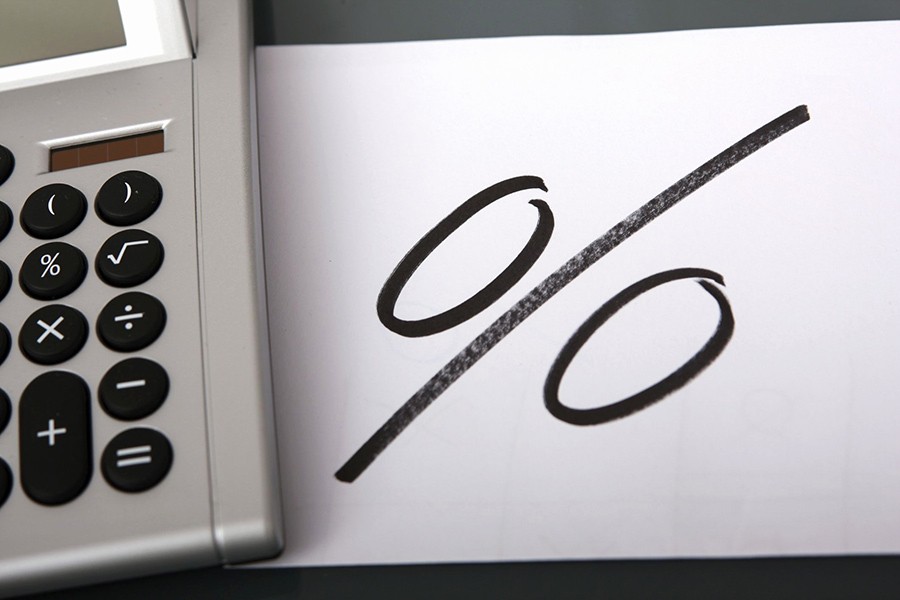The ongoing liquidity crunch has forced many private commercial banks to raise their deposit rates, particularly that of term deposits.
The hike has made the government move to lower the lending rates to single digit almost untenable.
The deposit rates started creeping up from September last year and the same have gathered pace in recent months.
Some private commercial banks (PCBs) are now offering a maximum interest 11.50 per cent, which is higher than the yield rate of the national savings tools.
Most PCBs are now charging interest on lending for medium- and large-scale industries at rates ranging between 11.50 per cent and 15.50 per cent instead of 9.0 per cent, the rate their sponsors had promised earlier.
On June 20, 2018, the Bangladesh Association of Banks (BAB) decided to cut interest rates on lending and deposit to 9.0 per cent and 6.0 per cent respectively from the first day of the immediate past fiscal year (FY) 2018-19.
When contacted, a senior leader of the BAB declined to make any comment on the interest rate issue.
The bankers, however, said the single-digit interest rate on lending is not possible right now because of the rising deposit rates.
"The single-digit lending rate will not be possible in such a tight liquidity situation," a senior executive of a leading PCB told the FE.
He rather predicted a further hike in deposit rates in the coming months.
Adherence to the policy on offshore banking operation will also put pressure on liquidity in the near future, he added.
As per the policy, issued by the central bank on February 25, the banks will have to keep 13 per cent of their total liabilities as statutory liquidity ratio (SLR) and 5.50 per cent as cash reserve requirement (CRR) from September 01.
Besides, availability of liquidity will also depend on pattern of the government's bank borrowing in the coming months, another banker explained.
He also said liquidity inflow has slightly increased in the market this month after disbursement of the government funds for implementation of the Annual Development Programme (ADP) for the current FY.
But most of the bankers are not sure about continuation of the liquidity inflow, saying that liquidity pressure may rise further in the near future.
"Considering the existing liquidity scenario, it is not a (right) proposition to bring down the lending rates to single-digit now," Syed Mahbubur Rahman, Chairman of the Association of Bankers, Bangladesh (ABB), told the FE on Friday.
But the entire banking industry is willing to bring down the lending rate to single-digit to facilitate the country's economic activities, the senior banker also said.
"We need positive understanding of the depositors, both in public and private sectors, to make the single-digit lending rate a reality," Mr. Rahman, managing director and chief executive officer of the Dhaka Bank Limited, added.
On the other hand, the Bangladesh Bank (BB) has already advised 47 scheduled banks, out of 59, to implement the single-digit interest rate on lending as per the announcement of the Bangladesh Association of Banks (BAB).
"Our close monitoring on implementation of the single-digit lending rate directive will continue," a BB senior official told the FE.
The central banker also said the BB officials will investigate it along with monitoring.
Currently, the banks are lending funds to large and medium industries at interest rates ranging from 6.0 per cent to 17 per cent, and to small industries at rates between 9.0 per cent and 20 per cent, according to the BB's latest monitoring report.
The banks' lending rates on providing working capital to large and medium industries vary between 6.75 per cent and 16 per cent, according to a report on the scheduled banks' interest rates for July 2019.
The interest rates on working capital for small industries range from 9.0 per cent to 18.00 per cent, and on trade financing loans from 6.75 per cent to 16 per cent.
Interest rates on housing loans range between 7.0 per cent and 16 per cent, and on consumer credits between 7.99 per cent and 20.50 per cent, said the central bank's latest monitoring report.
On the other hand, the banks are now offering interest on fixed deposit schemes, particularly of three-month, six-month and one-year periods at rates ranging from 2.00 per cent and 11.50 per cent, it added.
The banks are offering interest on savings accounts at rates ranging between 0.40 per cent and 10.00 per cent to attract more funds from general depositors.
Meanwhile, the interest rate spread in the country's banking sector moved up slightly, as the commercial banks increased their interest rate on lending more than on deposit.
The weighted average spread between lending and deposit rates, offered by the banks, rose to 4.05 per cent in May 2019 from 4.04 per cent in the previous month, according to the BB's latest statistics.
The spread increased slightly in May after a month, but it remained unchanged at 4.15 per cent in three consecutive months - from January to March.
The weighted average rate on deposits rose to 5.46 per cent in May from 4.42 per cent a month before, while interest rates on lending stood at 9.51 per cent from 9.46 per cent.
The interest rate spread has been maintaining a downward trend since fiscal year (FY) 2014-15, as the central bank has been persuading the banks continuously for bringing down the spread to 4.0 per cent.
The data from FY 2009 to May of FY 2019 show that the spread was hovering between maximum 5.60 per cent (in FY 2012) and minimum 4.04 (in April of FY 2019).


